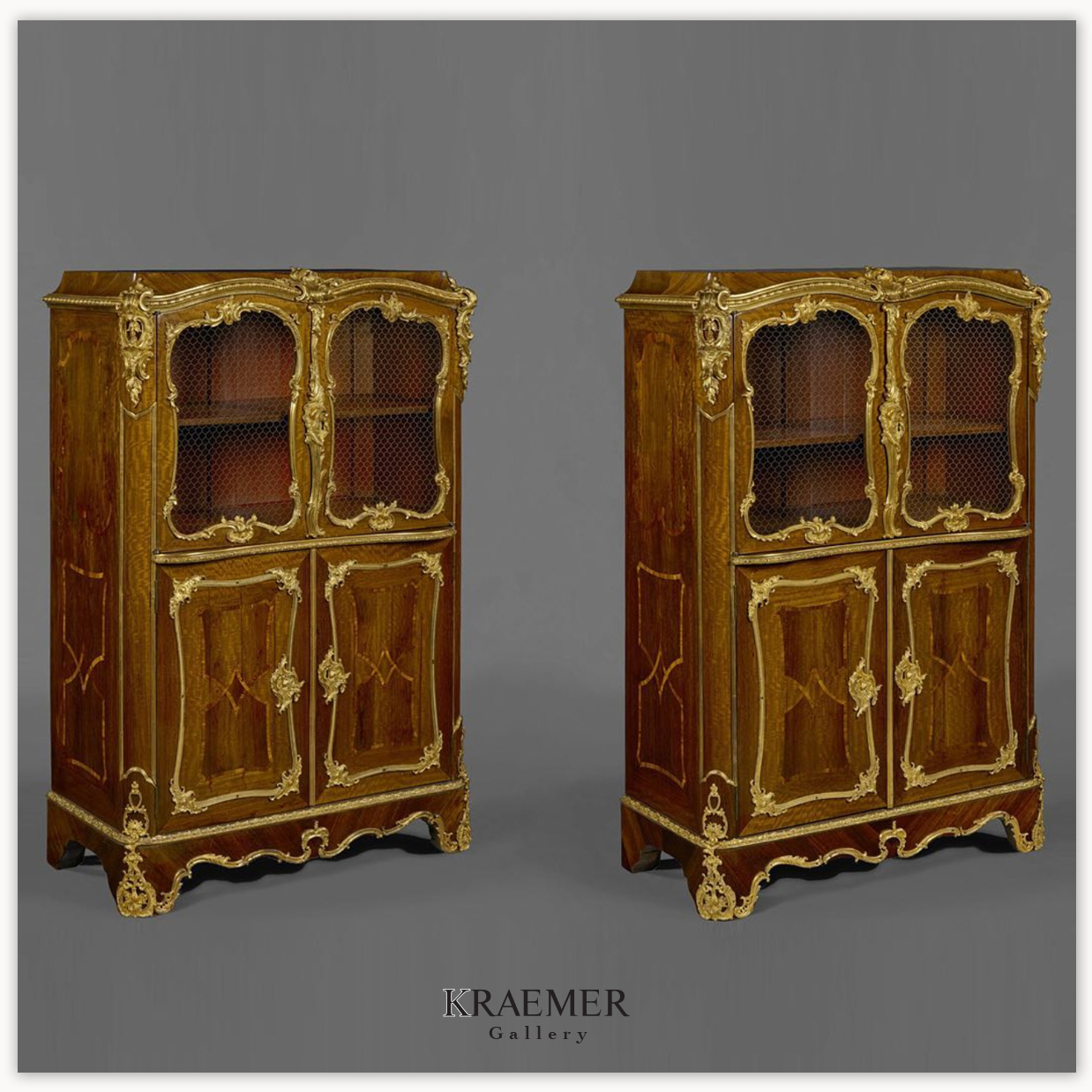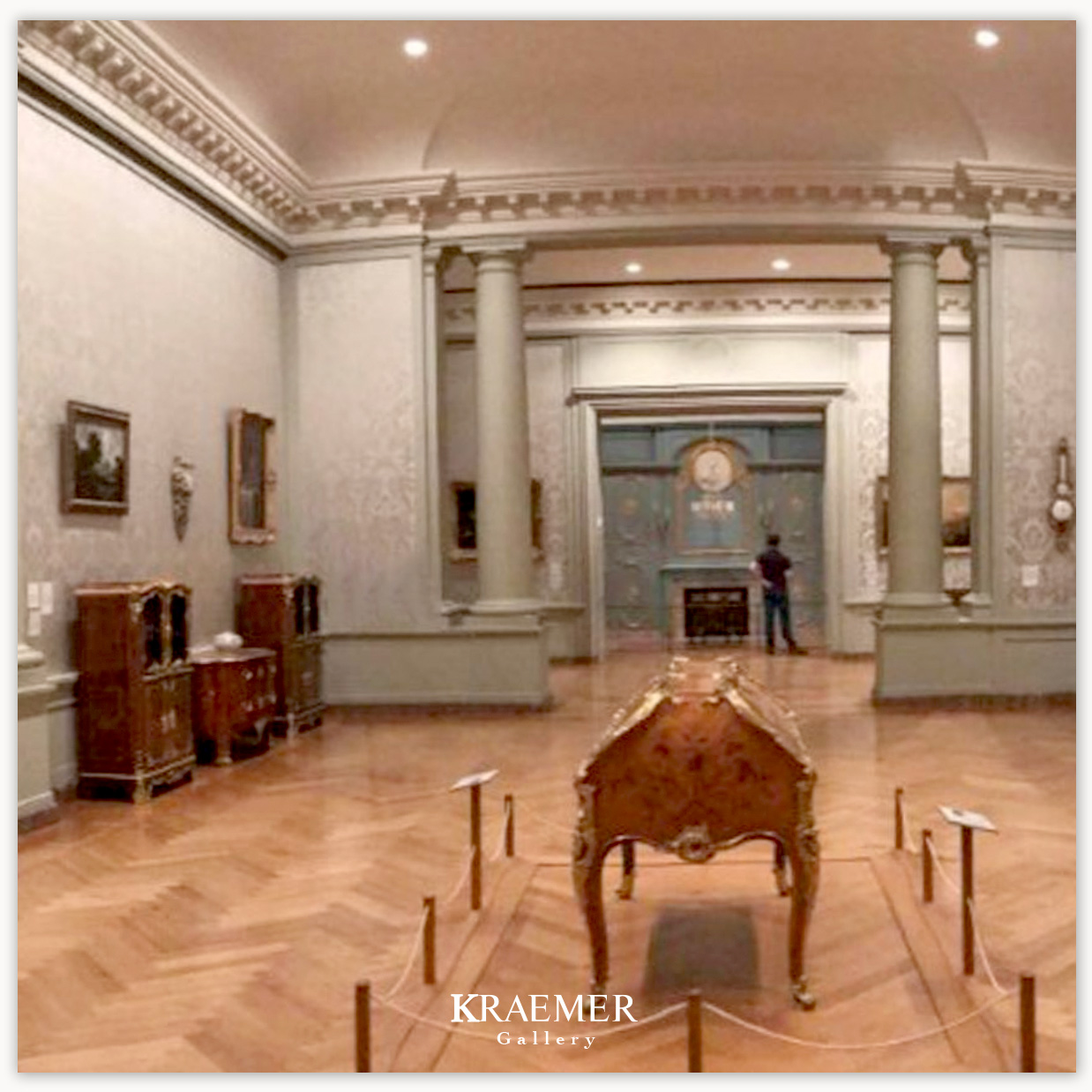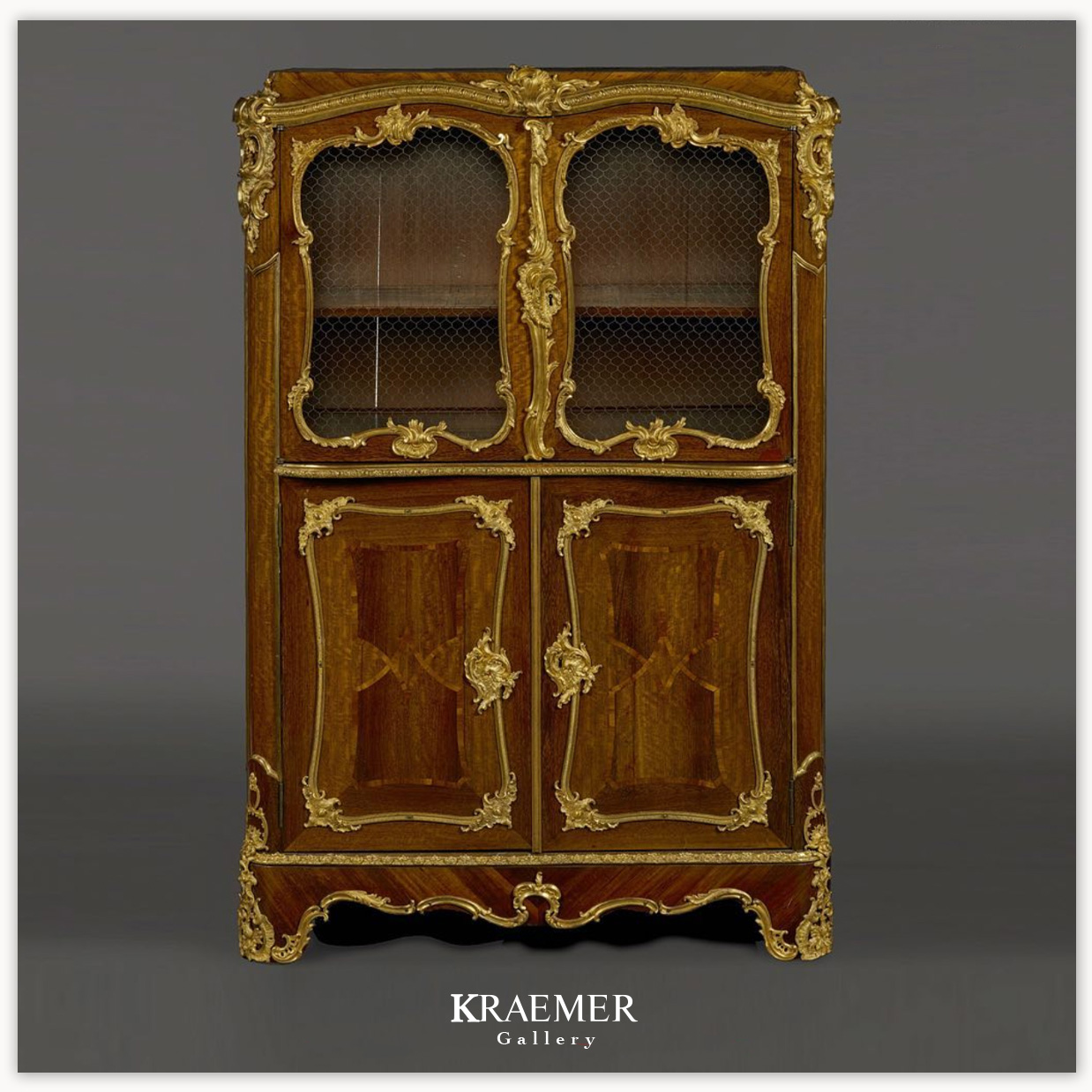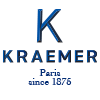IN THE MUSEUMS
Two display cabinets – Louis XV era
Two display cabinets featuring doucines, made with rosewood and satin marquetry and adorned with chiselled, gilded bronze elements.
Stamped “BVRB II” (Bernard Van Risenburgh). Circa 1750-1755.
Provenance: probably John Hobart Caradoc, 2nd Baron Howden; Albert Denison (circa 1850);
William H.F. Denison, 2nd Baron and 1st Earl of Londesborough (Grimston Park, Tadcaster, Yorkshire, England); by descent, the Fielden family (Grimston Park);
Provenance: Kraemer Gallery.
J. Paul Getty Museum, Los Angeles.
Bernard Van Risenburgh, who was the son of a cabinetmaker, obtained his degree around 1730. He probably worked in his father’s workshop, which he continued to do after his father died in 1738. Bernard II liked to create bold, yet subtle pieces. He often crafted bronze ornaments shaped like ribbed coils or flat mouldings with intertwined flower-shaped patterns; he would use them to frame marquetry panels. Later – probably after 1750 – he adopted a more sober type of marquetry: he would use rosewood or kingwood panels inlaid with darker kingwood patterns on the edges, made in what was called “end grain wood”.
These two display cabinets feature doucines and are made of satin and rosewood marquetry; there are two cabinet doors at the bottom and two open ones at the top, covered in wire netting. These cabinets were used to display collections of seashells, coral, and other natural or mineral objects.




